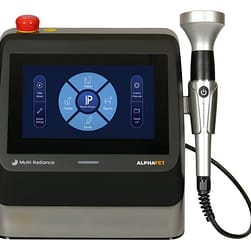
Veterinary conferences have featured lectures on the topic of telemedicine for years. Five to ten years ago, however, these lectures were primarily attended by veterinary innovators. Telemedicine was largely seen as something “for the future,” and not as a topic of relevance to practicing veterinarians.
During the COVID-19 pandemic, however, a shift occurred. As many human medical providers pivoted to offering their services via telemedicine, an increasing number of veterinarians followed. In fact, the percentage of veterinary practices offering telemedicine services increased from just 12% in early 2020 to 38% by the middle of 2020.
Are you considering offering telemedicine in your practice? If so, consider these 8 tips:
1. Understand the meaning of the word “telemedicine.”
The American Veterinary Medical Association (AVMA) defines telemedicine as a branch of telehealth “that involves use of a tool to exchange medical information electronically from one site to another to improve a patient’s clinical health status.”
Your practice probably already offers telemedicine, at least on a limited basis. When a client emails you their cat’s most recent at-home glucose curve for analysis and you respond with an insulin dosage change, you are practicing telemedicine. When a client calls you with concerns about a post-surgical patient and you address these concerns with medical advice or a medication prescription, you are practicing telemedicine.
While telemedicine is a small component of almost every veterinarian’s workday, there are ways to expand its use in a way that benefits your practice, your clients, and your patients.
2. Carefully consider how you will offer telemedicine services.
Telemedicine services can be as simple as a telephone call or an email. Technically, both of these forms of communication involve the electronic exchange of medical information to improve a patient’s health status.
In most cases, however, a practice that is promoting telemedicine services will offer something more, that allows them to better replicate a normal, in-person consultation. Video consultations are a common form of telemedicine, with veterinarians using Zoom® or a similar service to communicate with the client (in real time) and visualize the pet. Chat or text-messaging based communication can also serve as a form of telemedicine, especially when owners are encouraged to submit photographs in addition to their own observations.
Before advertising and promoting telemedicine services, you will need to think through how your practice will offer these services. Consider the space and equipment that your practice has available, as well as the stability of your internet connection. Think about how tech-savvy your clients are likely to be, and which forms of communication they are likely to prefer.
Finally, consider your state’s veterinary practice act. In many states, you are only permitted to offer telemedicine services in the context of an established veterinarian-client-patient relationship (VCPR). However, this area is rapidly changing, so it is always best to consult your state veterinary board.
3. Emphasize the ways in which telemedicine can benefit your clients and patients.
Telemedicine’s benefits to the veterinary team are obvious. Addressing a client’s concern via telemedicine often requires less time, less support staff, and less physical resources than addressing the same concern via an in-person visit. However, it is important to also consider the benefits of telemedicine from the client’s perspective.
Telemedicine can remove barriers to care. Clients with transportation challenges may struggle to bring their pet to your practice; offering telemedicine services allows them to avoid this headache. Telemedicine can help clients with demanding work schedules; it is easier to free up 15 minutes for a telemedicine consult than two or three hours to load a pet into the car, drive to the veterinary clinic, wait in the lobby, have the pet examined, check out, and drive home. Studies have shown that millennials (people in their mid-20s to approximately 40 years old) often prefer telehealth because it allows them to avoid trips to the veterinary hospital that they may view as unnecessary or overly time-consuming.
Finally, telemedicine is better for many pets. Dogs or cats that experience motion sickness or travel anxiety benefit from avoiding a car ride. Pets that become anxious in the veterinary hospital or around other pets can avoid this stress by remaining in their home environment. While telemedicine is not appropriate for every situation, its judicious use can be beneficial for patients.
4. Develop a record-keeping system for telemedicine consultations.
Just like an in-person examination, telemedicine requires documentation. While brief summary notes may be appropriate for a phone call, a video consult should be accompanied by detailed medical records. The information contained in these records will be different from the information gleaned during an in-person visit, but the typical SOAP format (subjective, objective, assessment, and plan) will be beneficial.
If you are using email or chat/text messaging with your clients, you may be able to add these communications directly to your patient’s medical records. This ability will depend on the particular practice management system that you are utilizing. If importing communications directly is not an option, you can use your computer’s copy/paste feature or add a detailed summary in the medical notes.
5. Charge what you’re worth.
You are likely already offering some telemedicine services for free. Expanding your telemedicine services will require establishing fees and determining which services remain free of charge to the client.
In general, telephone triage services (for example, a client calls about their dog that has been vomiting for one week and asks whether an appointment is recommended) should remain free. Phone calls requesting brief advice about vaccine schedules, parasite prevention, and diet should also be free for the client. These calls can be addressed by your support staff and may result in attracting new clients to your practice.
When a client has specific questions for a veterinarian, this crosses the line from teletriage to telemedicine. This is especially true if these questions are patient-specific, requiring you to consult the pet’s medical record. Conversations about chronic diseases (including at-home glucose curve monitoring) and new problems both constitute practicing telemedicine. These conversations should be scheduled as a telemedicine appointment, with an accompanying charge to the client.
6. Train your staff to identify candidates for telemedicine.
Telemedicine can be used to address a wide variety of medical cases. However, there will always be cases that require in-person care. Scheduling a telemedicine consult when it is clearly contraindicated can delay a pet’s diagnosis and treatment.
Telemedicine is not appropriate in the following cases:
- Life-threatening emergencies
- Conditions that are very likely to require a hands-on physical exam, such as abdominal pain or severe lameness
- Conditions that are very likely to require diagnostic testing, such as otitis externa (otoscopic exam, ear cytology) or a potential skin infection (skin impression, skin scraping, etc.)
Cases that are good candidates for telemedicine include:
- Conditions that are easily diagnosed based on appearances, such as fleas or tapeworms
- Mild, acute lameness, in which a brief period of rest and non-steroidal anti-inflammatory drugs may be an appropriate option prior to a thorough orthopedic exam and radiographs
- Mild gastrointestinal signs, such as a single episode of vomiting or diarrhea
- Follow-up care after surgery or treatment, especially if the pet is doing well
Before implementing telemedicine consultations in your practice, educate your front desk staff on how to appropriately identify candidates for telemedicine. Be prepared to answer questions often in the early weeks and months; over time, your team will become more comfortable appropriately identifying cases.
7. Decide how to handle telemedicine cases that require in-person care.
Inevitably, some telemedicine cases will result in a need for in-person care. However, some clients who have paid for a telemedicine consult may balk at being asked to pay for a follow-up, in-person exam. Consider applying some or all of your telemedicine exam charge towards an in-person exam if indicated, to encourage clients to follow up on recommended visits.
In some cases, follow-up care can be provided by a veterinary technician. For example, you may conduct a telemedicine consult with a client whose dog is having urinary accidents within their home, then schedule a technician appointment for a urine collection and urinalysis. In this case, a physical exam is not necessary, though you may charge a technician fee.
It is impossible to think through every sample that may arise while practicing telemedicine. Thinking through a few of the most likely scenarios, however, will minimize the likelihood that you are caught off guard and help you begin the process of firming up your policies surrounding telemedicine.
8. Start small and course correct as needed.
Keep in mind that you do not necessarily need to roll out a huge telemedicine program all at once. Instead, start small. Begin offering telemedicine services to a limited number of carefully-selected clients, in a limited number of scenarios. As you and your team gain familiarity and comfort with telemedicine, you can gradually expand your offerings.
The early stages of telemedicine are, in most practices, a period of experimentation. As you see what works well in your practice, with your particular staff and clients, do not be afraid to make changes. In six months, you might be surprised with how seamlessly you are able to rationally integrate telemedicine into your veterinary practice.









